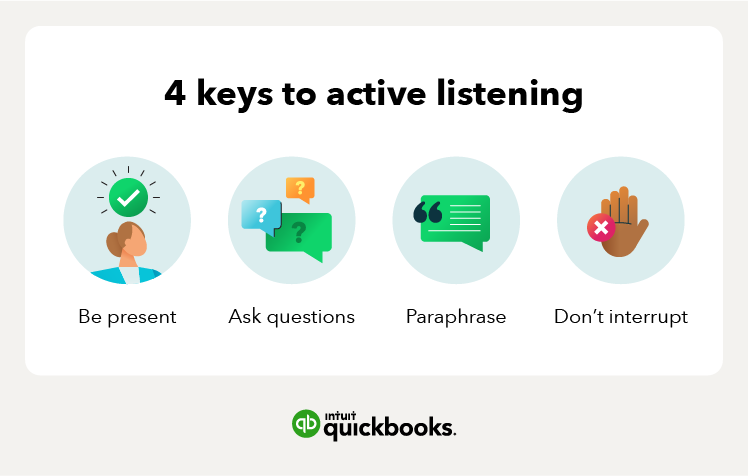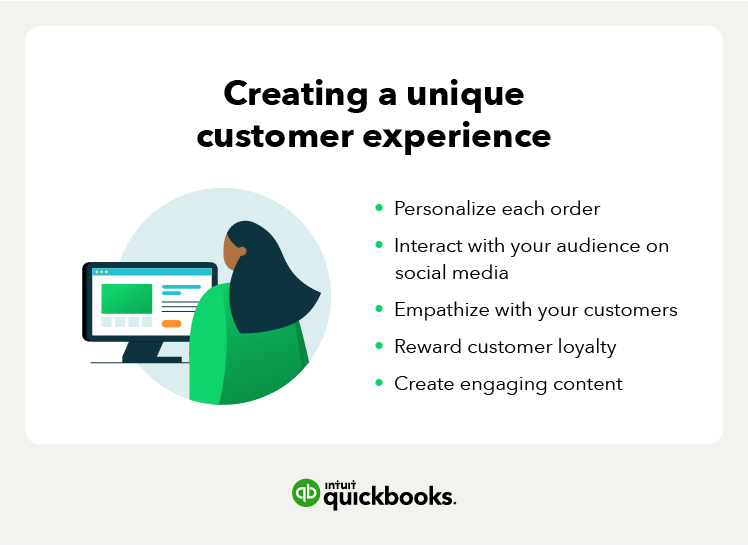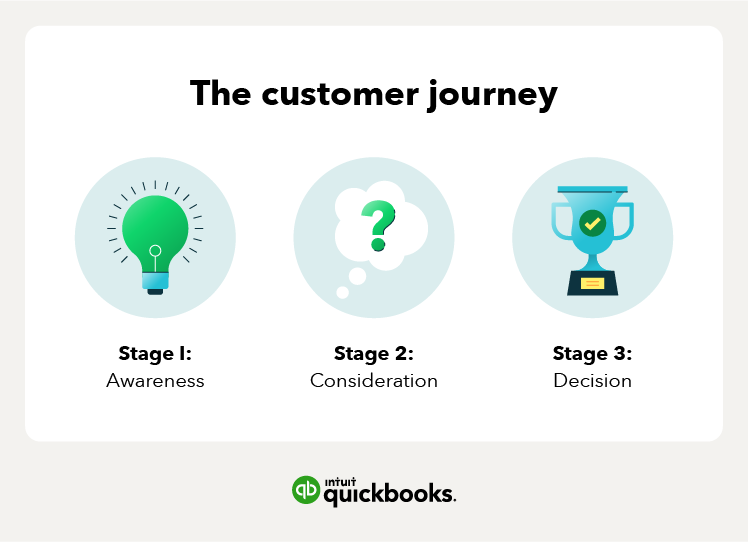There’s nothing more frustrating for a customer than interacting with employees who don’t properly listen to their problems. This can result in the customer being transferred back and forth between customer service reps, leaving them with unsolved issues and a negative impression of your business.
To ensure that this doesn’t happen, active listening is an essential customer service skill to practice. To do this:
Be present: Put your phone and any other distractions aside.
Ask Questions: Ask leading questions to fully understand how to best help your customer.
Paraphrase: Repeat what the customer said in your own words to show you’re listening.
Don’t interrupt: Show patience and respect by letting the customer speak.
2. Communicate honestly
When you promise a customer a particular solution, make sure you follow through. After all, the outcome of great customer service is partly psychological. The customer should be able to look back on the interaction feeling like they have been heard, knowing that they can rely on the company to honor its commitments in the future.
Additionally, when you’ve made a mistake, be sure to own up to it. It’s unavoidable—every customer support team makes mistakes here and there. When you try to cover up or deny mistakes, however, it can lead to frustration that only exacerbates your customer’s problems.
Instead, be honest and authentic. This will result in a better overall experience for everyone involved and is a simple way to improve customer retention.
3. Go above and beyond
To exceed customer needs and expectations, you need to go the extra mile. To this end, you should always be looking for ways to optimize your customer communication.
For example, if you can reduce the amount of time it takes the customer to contact key personnel or the number of formalities they have to go through, you can create a smooth experience that leads to efficient customer interactions. When you do things right, this makes the customer feel special, like a VIP—and it’s a feeling that few of us take for granted.
4. Be clear
Communicate clearly. When you give confusing or inconsistent answers, it leads to the breakdown of customer trust. To help prevent this, you need to make sure you’re speaking in a way that customers can understand.
Here are some ways to optimize your customer communication:
Simplify your language: Avoid using industry jargon. Try to communicate using words that the average person will understand.
Provide thorough answers: If you’re explaining a difficult concept, take your time and be patient.
Enunciate: Enunciation is a necessity in all scenarios, but especially over the phone.
5. Offer self-service options
Many customers are solutions-oriented. They are eager to quickly solve problems themselves before putting in the effort to get a customer service representative involved. In fact, according to a survey by Microsoft, 90% of people say they expect brands to offer an online portal for self-service.
One way to help customers help themselves is to have a readily available FAQ section on your website. Compile a list of your most common customer questions coupled with concise, easy-to-understand answers. This way, you can help your customers without them even having to pick up the phone.
As you create more self-service options, it might be tempting to automate more customer service processes. While automation can be helpful in some ways, be mindful of its pros and cons.
For example, while chatbots are a great way to automate real-time answers to customer questions, they can also feel cold and impersonal.
That said, you could always implement a chatbot in conjunction with your regular customer support team members. That way, if your team is unavailable for whatever reason, your customers still have access to a helpful resource.
6. Create a unique customer experience














